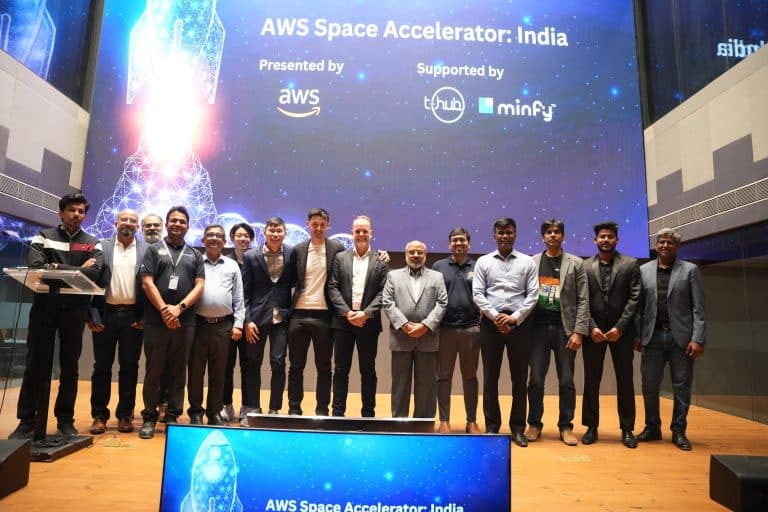|
Listen to this story
|
At its cloud computing conference, AWS re:Invent 2022, CEO Adam Selipsky made several announcements. Here are a few highlights from his keynote address:
Amazon DataZone
DataZone is a data management service that can help organisations search, share, and organise their data available across AWS, on-premises, and third-party sources. The application is integrated with AWS analytics services like Amazon Redshift, Amazon Athena, and Amazon QuickSight for businesses to use these services in the context of their data project. It also offers application programming interfaces (APIs) to integrate with specialised solutions or partners like DataBricks, Snowflake, and Tableau.
Amazon Redshift Integration
AWS also announced two integrations with which customers can connect and analyse data across data without having to move it across different services. First, the integration of Amazon Aurora with Amazon Redshift allows customers to run Amazon Aurora data with Redshift in real time. Similarly, Amazon Redshift’s integration with Apache Spark enables AWS analytics and ML services to run Apache Spark applications on Amazon Redshift data. The integrations eliminate the need to extract, transform, and load (ETL) data between services, leading to a zero-ETL future.
AWS SimSpace Weaver
SimSpace Weaver is a fully-managed computer service that helps customers build, operate, and run large-scale spatial simulations. This application allows customers to deploy spatial simulations to model dynamic systems with many data points. The spatial simulations can visualise physical spaces, perform immersive training, and gain insights into various scenarios to help them make decisions. In addition, it reduces the time to simulation deployment and creates more sophisticated environments than before.
AWS Clean Rooms
Clean Rooms is a service that enables multiple parties to combine and analyse their data in a secure environment without being able to access each other’s raw data. It offers a broad set of built-in data access controls, including query controls, query output restrictions, query logging allowing businesses to customise restrictions on the queries executed by each clean room member. It also offers advanced cryptographic computing tools that adhere to strict data-handling policies and keeps the data encrypted even when queries are processed.
Amazon EC2 Instances
AWS also released three new Amazon Elastic Compute Cloud (Amazon EC2) instances powered by AWS-designed chips, which are built to provide the best price-performance for running high-performance computing workloads at scale to help customers solve their most complex academic, scientific, and business problems—from genomics processing to mathematical modelling to weather forecasting. The three new Amazon Elastic Compute Cloud (Amazon EC2) instances include the new AWS Graviton3E chips-powered Hpc7g instances, offering the best price-performance for running HPC workloads, AWS Nitro Cards-powered C7gn instances, which provide the best performance for network-intensive workloads, and AWS Inferentia2 chips-powered Inf2 instances, which are designed to support large deep learning models.
Amazon Omics
AWS announced the general availability of Amazon Omics for bioinformaticians, researchers, and scientists to store, query, analyse, and derive insights from genomic, transcriptomic, and other omics data. It supports large-scale analysis and collaborative research, so users can be reassured about setting up the supporting infrastructure. Further, it also reduces the time spent setting up and running complex ETL pipelines by natively storing data in optimised query-ready formats (for example, Apache Parquet) with only a few API calls.
It consists of three components: Omics-aware object storage, which stores, discovers, and shares raw sequence data effectively, securely, and cheaply; Omics Workflows, which removes all the undifferentiated heavy lifting associated with executing these workflows by enabling businesses to run reproducible bioinformatics workflows to process raw sequence data at scale in the Omics Storage or in S3; and Omics Analytics, which provides query-ready variants (or mutations) and annotations to simplify analytics.
Amazon Security Lake
Security Lake is a service that centralises security data automatically for an organisation from cloud and on-premises sources into a purpose-built data lake in a customer’s AWS account so that customers may act on security data faster. The application manages data throughout its lifecycle with customisable data retention settings, converts incoming security data to the efficient Apache Parquet format, and conforms it to the Open Cybersecurity Schema Framework (OCSF) standard. This makes it easier to automatically normalise security data from AWS and combine it with dozens of pre-integrated third-party enterprise security data sources.
Amazon QuickSight
AWS’ serverless business intelligence service introduced five new capabilities for Amazon QuickSight:
- QuickSight Q provides support for forecast and “why” questions of business users to make more data-driven decisions that affect future outcomes by having a greater understanding of the underlying factors.
- QuickSight Q will also automatically generate semantic information to datasets to significantly reduce time teams spend prepping data for natural language querying.
- QuickSight Paginated Reports give organisations a formatted, printable summary of data they can use to widely share crucial operational information to business users, such as daily transaction summaries and weekly updates.
- Amazon QuickSight Super-fast, Parallel, In-memory, Calculation Engine (SPICE) offers blazing-fast performance at scale, processing tens of trillions of records per hour on average and more than 100 million queries per week.
- QuickSight’s expanded application programming interface (API) capabilities allow customers to programmatically create, manage, and edit their BI assets (e.g., dashboards, analysis, and reports), enabling them to accelerate and streamline migrations from on-premises legacy systems.



















































































